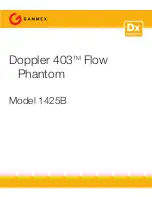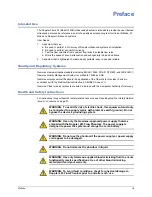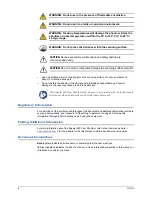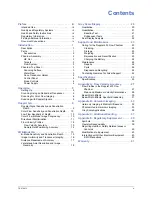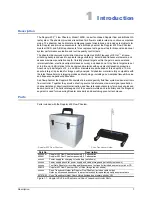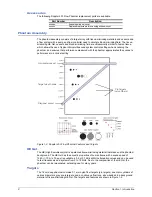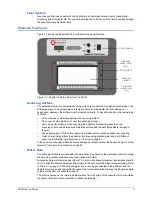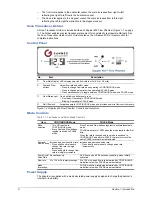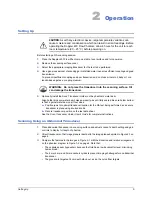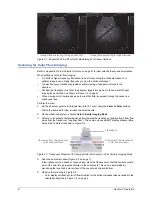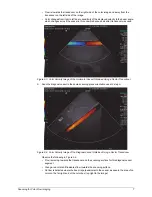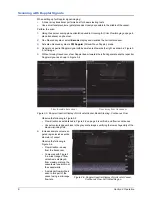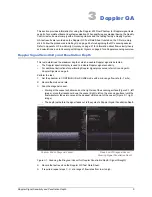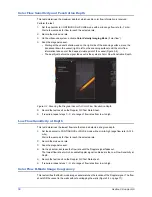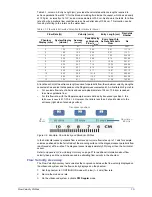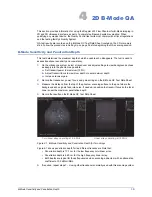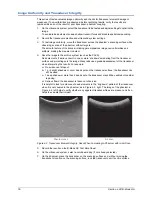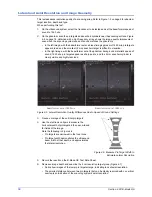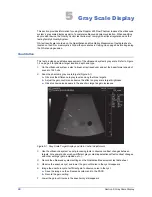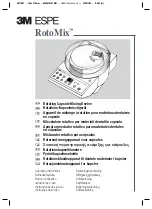
Setting Up
5
2
Operation
Setting Up
Before starting a QA scanning session:
1
Place the Doppler 403 Flow Phantom on a stable, level surface and turn power on.
2
Remove the scanning surface cover.
3
Select the appropriate imaging transducer for the test to be performed.
4
Use a generous amount of scanning gel or distilled water to ensure sufficient coupling and good
transmission.
To prevent insufficient coupling and poor transmission, do not use mineral oil, baby oil, or a
lanolin-based gel as a coupling medium.
5
Optionally install the Sono Transducer Holder on the phantom’s water dam.
Align holder pins over water dam holes and insert pins until fully seated. Be sure holder bottom
is flush against water dam on all four sides.
a.
Position jaws for optimal transducer location for the QA test being performed, and secure
transducer in place using knurled knobs.
b.
Record transducer position on the test data sheet.
See the
Sono Transducer Holder User’s Guide
for complete instructions.
Scanning Using an Abdominal Transducer
1
Place abdominal transducer on scanning surface and adjust scanner's depth setting and gain
controls to display full depth of phantom.
2
Orient transducer so that image plane is identical to the image planes depicted in Figure 2-1 on
page 6.
3
Compare the features in the images in Figure 2-1 with their location and relative arrangement
on the phantom diagram in Figure 1-2 on page 2. Note that:
• The vessels appear hypoechoic because the fluid has a low backscatter level, mimicking
human blood.
• The 6 mm, 4 mm and 2 mm anechoic cylinders present imaging challenges for an abdominal
transducer.
• The gray scale targets at 6 cm depth stand out, as do the nylon fiber targets.
CAUTION:
As with any electronic device, large temperature variations can
cause moisture and condensation which can result in errant readings. Before
operating the Doppler 403 Flow Phantom, allow 4 hours for the unit to reach
room temperature (20 – 25 °C) before powering on.
WARNING: Do not press the transducer into the scanning surface. Oil
can damage the transducer.

